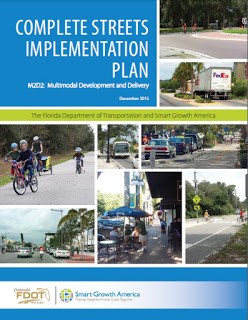 Roadway engineering is a precise profession. Most of us have no idea that the roads we use started with a long mathematical equation of slopes, speeds, widths, clearances, and other dimensions. Yet as exact and consistent as designs have been over the years, things do change even in traffic engineering, and a new and innovative approach to designing roads is emerging.
Roadway engineering is a precise profession. Most of us have no idea that the roads we use started with a long mathematical equation of slopes, speeds, widths, clearances, and other dimensions. Yet as exact and consistent as designs have been over the years, things do change even in traffic engineering, and a new and innovative approach to designing roads is emerging.
Behind the change is the need to design for the movement of people who aren’t in the typical motor vehicle but walking, taking public transportation, and bicycling. And the recognition that a one-size-fits-all design doesn’t work for all road types especially when taking into account dynamic communities. A road lined with shops in a residential neighborhood doesn’t need to function like one running through an industrial or rural area.
The Complete Streets Implementation Plan is a bold step to changing the traditional approach, with the intended outcome to improve safety for everyone and improve comfort for pedestrians and bicyclists. The implementation plan zeroes in on powerful documents that control the daily decisions made by roadway engineers, and prescribes precisely how those documents – and their outcomes – need to be changed. One of the documents that will incorporate a complete streets approach in the Florida Green Book, the “bible” of traffic engineers. What before were countless details that worked against good streets will at last be changed, swapping the obsolete wider-and-faster-is-better mentality for a more sensible, more humane, smarter way of looking at street design.

